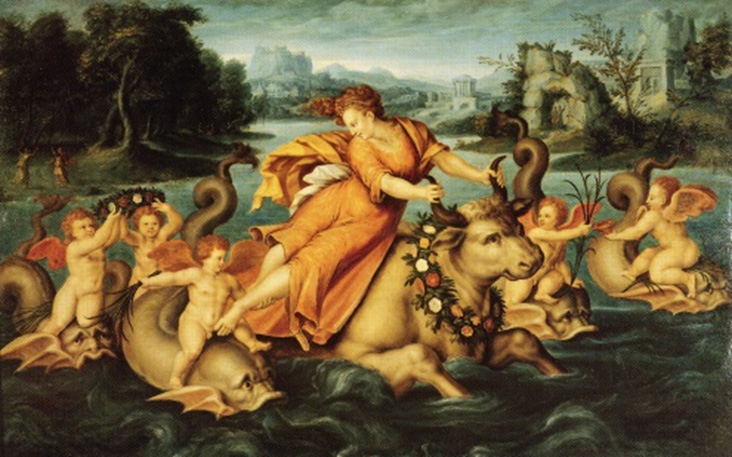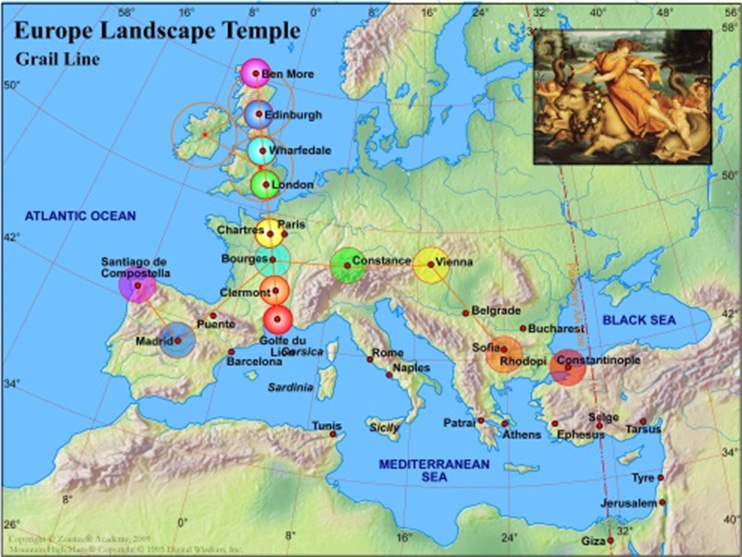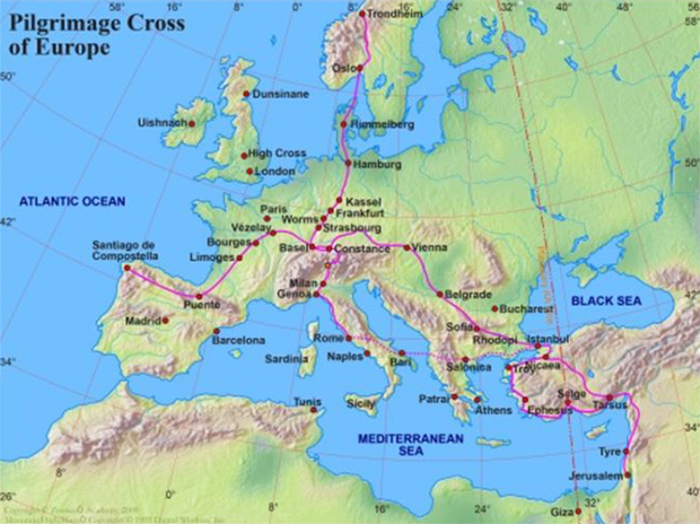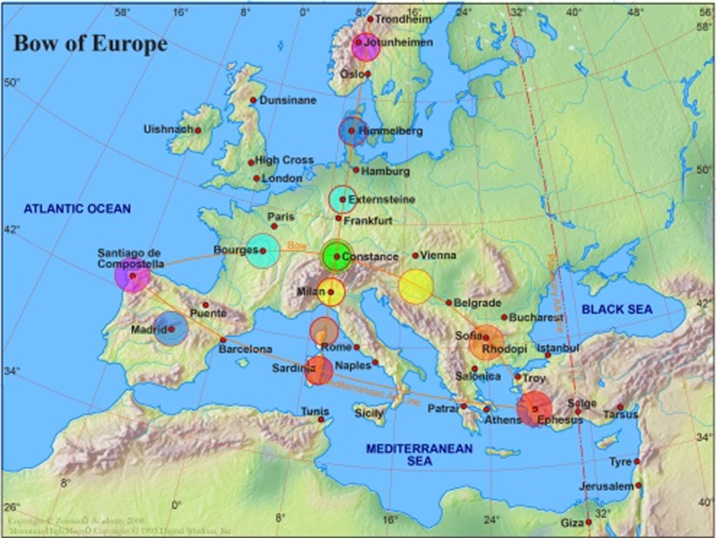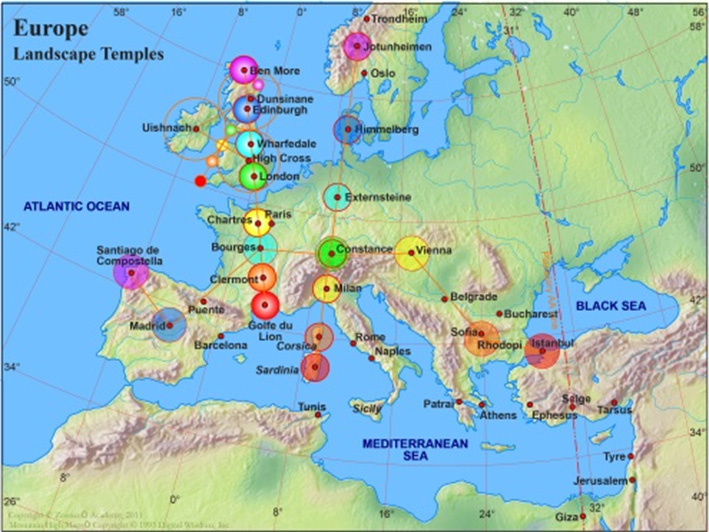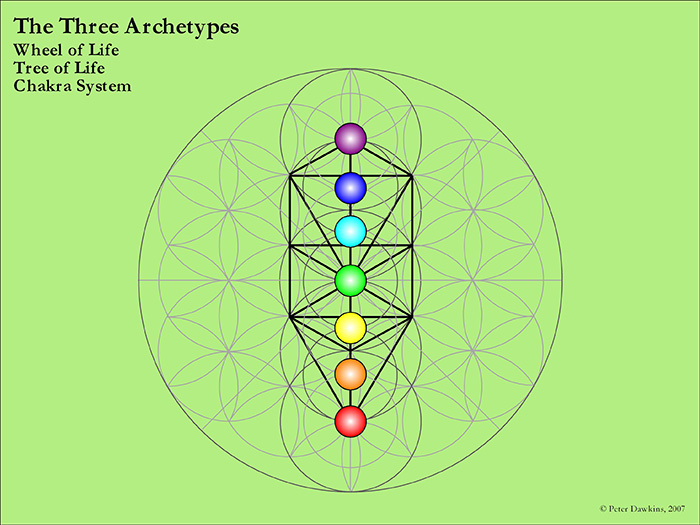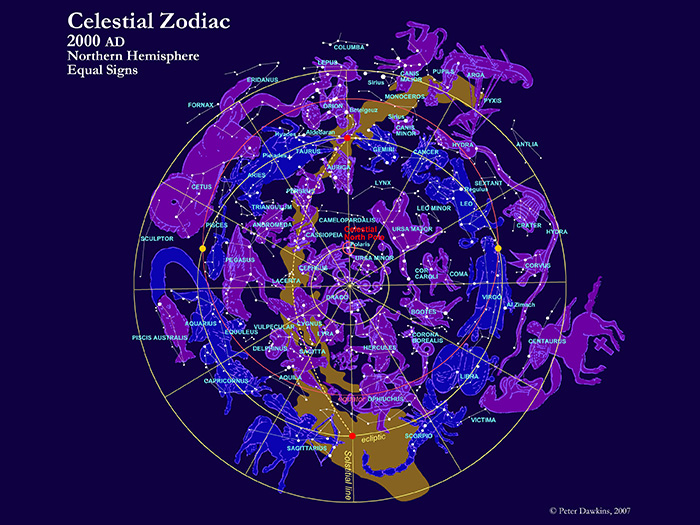The Continent of Europe
Europa and the Bull
Europe takes its name from the myth of Europa and the Bull, the story of which is written in the heavens in the hieroglyph of the constellation of Taurus. Lying behind this myth is a profound wisdom, which the myth allegorises— a wisdom concerning the creation of the world and universe, and associated with the throat chakra, the creative chakra of the sevenfold major chakra system.
A myth is an allegorical story packed with symbolism and many levels of meaning. Moreover, a myth has the ability to stay alive, grow and evolve, and to act as a vehicle or channel for inspiration and higher teachings. When connected to the landscape, as it often is, it is able to convey various insights into and knowledge of that landscape. That is to say, a myth can describe the symbolic form and nature of a landscape as well as its spiritual or ideal purpose.
The myth of Europa and the Bull seems to do this in terms of Europe and in the context of our planet as a whole. This appears to be a key to many things, including both planetary and human evolution. It appears to have been known to previous ages and cultures, and is in the process of being rediscovered and worked with in our present times, for the benefit of us all and the whole world. Landscapes and continents were not named haphazardly in the past but rather very carefully, with deep meaning—various levels of meaning, in fact—by those who really knew their land and its function in the greater whole.
According to a particular tradition and viewpoint that sees the myth as describing the spiritual purpose, archetype and geomantic nature of Europe, Europa (the goddess) is represented by the three lands known historically as Scotland, Ireland and Britain (i.e. England and Wales), known collectively as The British Isles, whilst the Bull (the god Zeus) is signified by mainland Europe.
As in the myth, the Bull rises out of the Black Sea with Europa on his neck and shoulders, his head down, back arched. In the good version of the myth, the Bull (Zeus in disguise) is attracted to Europa and she to him. He acts peacefully and with integrity. She, with equal integrity and purity, caresses him and voluntarily climbs onto his shoulders, following which he flies over the waters of the universe to a secret place on earth where they make love, the result being the birth of Hermes/Mercury. In the not-so-good version, neither act with integrity and purity of love, but with infatuation and lust. As a result the Bull rapes Europa (i.e. carries her off against her will), swimming through the waters and forcing himself upon her when they reach land, the result being hurt and other not-so-good things. This is the choice that Europe has—both the mainland and the British Isles.
The main energetic route from root to crown of the Bull of Europe is more or less followed and defined by the thousands-of-years-old east-west trade and pilgrimage route. Associated with this route are the major chakras of the European Bull, stretching from the Black Sea to the Atlantic Ocean, from Istanbul (the root) to Santiago de Compostela (the crown). Constance marks the heart, Madrid the brow (the Bull's Eye), Bourges the throat and Vienna the solar plexus, whilst the Rila-Rhodope Mountains of Bulgaria, home of the Orphic Mysteries, mark the sacral chakra.
In the good myth, Europa has a child by Zeus (the Bull), whose name is Hermes or Mercury. This child would seem to be represented in the landscape of Europe by the Grail Land, whose spine stretches from the south of France to the north of Scotland, thereby uniting—or being the result of the union of—the Bull (mainland Europe) and Europa (the British Isles). This union involves the Bull's throat chakra, the higher creative centre, which epitomises the essence of what the Bull represents symbolically: for Taurus, the Bull, is the astrological ruler of the throat chakra and the Alpha or first sign of the Zodiac.
Taurus symbolically represents the Creator, who seeds the universe (the goddess) by sounding the Word. This Word then takes form and birth by means of the mother goddess, represented by Europa in the myth and by the Pleiades in the sky. The name of Europa's child, Mercury, is derived from the Ancient Egyptian name, Maa Kheru, meaning 'The True Word'. This is what the Grail Land would seem to represent, which the Grail and Arthurian legends help to reveal, as does the landscape and what lies behind it.
The Bow of Greater Europe
In what might be called Greater Europe, which includes Asia Minor (the Near East), the root chakra is more appropriately and anciently located at Ephesus (in present-day Turkey). This arrangement seems to be one that was known to the early Christians. Ephesus, the great centre of the goddess Artemis (Diana), was where St John and the Virgin Mary went to live and where St John died and his body was buried. Its opposite polarity, the crown chakra, is centred on Santiago de Compostela, where St James, the brother of St John, supposedly went to preach and where, after St James' execution in Jerusalem, his disciples interred his body in a marble tomb (after painstakingly transporting it in a stone sarcophagus across the Mediterranean Sea). The story is an extraordinary one and clearly has a deeper meaning than what appears on the surface. Both places, Ephesus and Santiago de Compostela, became premier foci of pilgrimage in the centuries following, with great cathedrals being erected over the tombs of the two brothers.
Ephesus and Santiago de Compostela, deliberately made to be twin polarities to each other, are thereby linked by an energetic line across the Mediterranean, like two poles of a magnet. This line can be seen to string the 'bow' that is made by the chakras of the Bull, which arch like a bow across Europe. This bow is significant, linking as it does with the symbolism of Eros (Cupid). Its arrow is formed by the Heart Line (Swan Line) of Europe. The bow and arrow are ancient symbols of, respectively, the heart and the light that shines from the heart.
Leda and the Swan
Besides the myth of Europa and the Bull, the myth of Leda and the Swan is also associated with the functioning of the alta-major and throat chakras: hence, for instance, the use of the symbolism by Ben Jonson to describe Shakespeare as "The Sweet Swan of Avon" (i.e. the sweetly singing Swan). The same symbolism was employed in the Orphic mysteries to describe the great poet-hierophant Orpheus and all Orphic hierophants after him. Like the powerful neck of the bull, the long neck of the swan emphasises the throat. The difference in the two myths, in terms of their meanings, is that whereas the Bull is a powerful animal known for his strength and virility, who walks the land, ploughs the field (as the Ox) and sows his seed, the Swan by contrast is a bird that swims in the water and flies in the air.
Taurus the Bull is associated with law and justice, the foundation of a good society. The Swan, on the other hand, is associated with poetry, the arts and culture generally. One sounds the Word, which as the Word of Truth or Word of God is the Foundation Stone of the universe; the other raises consciousness of this truth to the heights. The corresponding Hindu myth that matches the classical Leda and Swan myth is that of Brahma and Saraswati, whose vehicle of manifestation is the Hamsa Swan. Brahma is the Vedic name of the Creator, who creates by Sound or Word; Saraswati is the goddess of language and culture. The children of Leda and the Swan are the Gemini, the heavenly twins, who correspond to the brothers Ham and Sa who together, united in love, compose the Hamsa Swan of the Vedic myth.
Looked at in another way, the other ancient trade and pilgrimage route crossing Europe from north to south, from Trondheim in Norway to Rome in Italy, thereby forming the Pilgrimage Cross of Europe, roughly manifests the spine of the Swan of Europe, whilst the east-west pilgrimage route forms the wings of the Swan. The chakras of the Swan of Europe approximately lie along this north-south pilgrimage route. The wings of this Swan are associated with the Bow of Europe, and its spine with the arrow (see above). Leda, like Europa, is represented by the British Isles.
All in all, the association of Europa and the Bull with Leda and the Swan, and both with Cupid’s (Eros’) Bow and Arrow, in terms of Europe and its ideal function, is entirely fitting, as it requires genuine love, friendship and wisdom to sound or vibrate with what is called the Word of Truth or Word of God. Loving friendship, good law, wise words, and a culture that inspires and uplifts the mind are the keys. If Europe could fulfil all of this, it would indeed bring a great blessing to the world and inaugurate a Golden Age.


